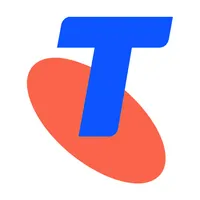Telstra NBN plans compared: every option from Australia’s largest telco

Telstra is the largest NBN provider in Australia, with just over 3.3 million active connections of a total of just over 8.8 million users connected to the fixed-line NBN at the time of writing. As the nation's telecommunications flag bearer, Telstra offers a high-quality service and dependable speeds.
With that said, there’s no getting around the fact that Telstra is also the most expensive NBN provider on the market. To make matters worse, the telco has increased the majority of plan prices as of July 2025, in line with new wholesale costs.
We think this is best illustrated by Telstra's NBN 50 plan: it previously cost AU$105 a month – AU$20 higher than the average monthly cost of all the NBN 50 plans monitored by TechRadar – at the time, but has now risen to AU$109 a month, AU$22 higher than the average. In short, other telcos including Optus, TPG and Superloop offer the same speed as Telstra, but at a much cheaper price.
It's a similar story with Telstra's higher-speed plans, including NBN 250 and NBN 1000. There was a time when Telstra was one of only a handful of providers to claim maximum plan speeds on the 250Mbps tier, but today, the vast majority of other providers match it. And for the gigabit tier, there are multiple providers advertising faster download speeds than Telstra's 815Mbps claim.
Telstra also used to throw in some extra perks, such as free subscriptions to services such as Spotify and Binge, but these have now seemingly been dropped.
To help more in your decision-making, we’ve laid out the best Telstra NBN plans below, or you can read our in-depth Telstra NBN review if you want a complete breakdown. If you want to learn more about each Telstra NBN plan, click on the links below to check out the speed you’re after:
Jump to:
• Telstra NBN 25 plan – AU$93p/m (no discount)
• Telstra NBN 50 plan – AU$109p/m (no discount)
• Telstra NBN 100 plan – AU$113p/m (no discount)
• Telstra NBN 250 plan – AU$129p/m (no discount)
• Telstra NBN 1000 plan – AU$139p/m (no discount)
Telstra NBN plans
Telstra NBN 100 plan
Why you can trust TechRadar
Telstra | NBN 100 | Unlimited data | No lock-in contract | AU$113p/m
Considering the high costs, it's tricky to pick an outright 'best' Telstra NBN plan. However, we've chosen the NBN 100 option as it's the fastest all fixed-line NBN users can access. We'd encourage you to consider your other options though, as it's possible to pay as much as AU$54 less for the same speeds, courtesy of fellow 'big three' provider, TPG.
• Total minimum cost: AU$113
• Total yearly cost: AU$1,356
• See more: Best NBN 100 plans
Telstra NBN 25 plan
Telstra | NBN 25 | Unlimited data | No lock-in contract | AU$93p/m
This is Telstra’s cheapest NBN offering, but it’s hardly the most affordable plan out there – not when the average monthly cost of this tier is just over AU$72. You’ll get a top typical evening speed of 25Mbps on this plan, but plenty of other providers offer the same at a cheaper price. It does come with nice inclusions such as a modem with 4G backup, though we still struggle to recommend this plan at the price. If you decide to leave within 24 months, just return the modem or pay a AU$200 non-return fee.
• Total minimum cost: AU$93
• Total yearly cost: AU$1,116
• See more: Best NBN 25 plans
Telstra NBN 50 plan
Telstra | NBN 50 | Unlimited data | No lock-in contract | AU$109p/m
The 50Mbps NBN 50 speed tier continues to be the most popular choice in Australia, as it offers a good combination of speed and price. Or at least, it does if it's not a Telstra plan. The average cost of an NBN 50 plan in Australia is currently just over AU$87, so we find it hard to recommend this plan at all. The majority of providers will advertise the maximum 50Mbps download speeds during the busier evening hours, so it doesn't make logical sense to us why you would spend more when you don't have to.
A Telstra plan does come with the added benefit of 4G backup if your fixed line connection happens to suffer an outage, but Optus offers this too, and charges AU$14 less each month.
• Total minimum cost: AU$109
• Total yearly cost: AU$1,308
• See more: Best NBN 50 plans
Telstra NBN 250 plan
Telstra | NBN 250 | Unlimited data | No lock-in contract | AU$129p/m
Telstra was, initially, one of the few providers to claim maximum plan speeds on this tier. Today however, other providers have caught up, and charge an awful lot less. In fact, at the moment, Telstra is some AU$23 more each month than the average. A slight consolation? Telstra has reduced the cost of this plan since July 2025, albeit only by a dollar each month.
• Total minimum cost: AU$129
• Total yearly cost: AU$1,548
• See more: Best NBN 250 plans
Telstra NBN 1000 plan
Telstra | NBN 1000 | Unlimited data | No lock-in contract | AU$139p/m
The positive we can mention with Telstra's NBN 1000 plan is that is has at least come down in price in recent years. There was a time the telco was charging as much as AU$180p/m, but that's now come down to AU$139 as of July 2025.
But there's no getting around the fact some other providers, such as Buddy Telco, charge just AU$99p/m and claim faster typical evening speeds of 875Mbps compared to Telstra's 815Mbps.
• Total minimum cost: AU$139
• Total yearly cost: AU$1,668
• See more: Best NBN 1000 plans
Telstra NBN FAQ
How much does Telstra NBN cost?
At their standard prices, the options you have to choose from in Telstra’s NBN range includes: NBN 25 for AU$93 a month, NBN 50 for AU$109 a month, NBN 100 for AU$113 a month, NBN 250 for AU$129 a month and NBN 1000 for AU$139.
Can I get Telstra NBN?
Yes, but not all NBN connection types will have access to Telstra’s higher speed tiers. To find out what connection type is available at your address, you can simply check your address on Telstra’s website. Doing this will also tell you the maximum speeds available at your location, and you may find that Telstra restricts what NBN plan you can sign up to based on your address.
This is a good thing, because it means you won’t be paying for a service that can’t be delivered to your home. This feature was introduced after the Australian Competition and Consumer Commission (ACCC) took Telstra, Optus and TPG to the Federal Court, after it found that each telco had made false statements to customers regarding how fast their NBN plans were capable of reaching.
It’s worth noting that Telstra’s NBN 250 and NBN 1000 options are only available to those with a FTTP or a HFC connection. You can read more about each connection type here.
What perks come with Telstra NBN?
Other than reliability, what kind of perks can you expect with Telstra NBN? Well, all plans come with the Telstra Smart Modem 3, which is enabled with Wi-Fi 6 and 4G backup, so you can connect to the internet through the telco’s mobile network if there’s an NBN outage.
You’ll also earn Telstra Plus points to redeem on a broad range of tech at its Rewards Store, which includes things like movie and sports tickets and pre-sale access to select concerts. There are also optional entertainment extras you can add-on to your plan, such as Xbox All Access and Foxtel, though they come at an additional cost.
- Telstra vs Optus NBN: who has better broadband?
Sign up for breaking news, reviews, opinion, top tech deals, and more.

Max is a senior staff writer for TechRadar who covers home entertainment and audio first, NBN second and virtually anything else that falls under the consumer electronics umbrella third. He's also a bit of an ecommerce fiend, particularly when it comes to finding the latest coupon codes for a variety of publications. He has written for TechRadar's sister publication What Hi-Fi? as well as Pocket-lint, and he's also the editor of Australian Hi-Fi and Audio Esoterica magazines. Max also dabbled in the men's lifestyle publication space, but is now firmly rooted in his first passion of technology.
- Jasmine GearieEcommerce Editor
